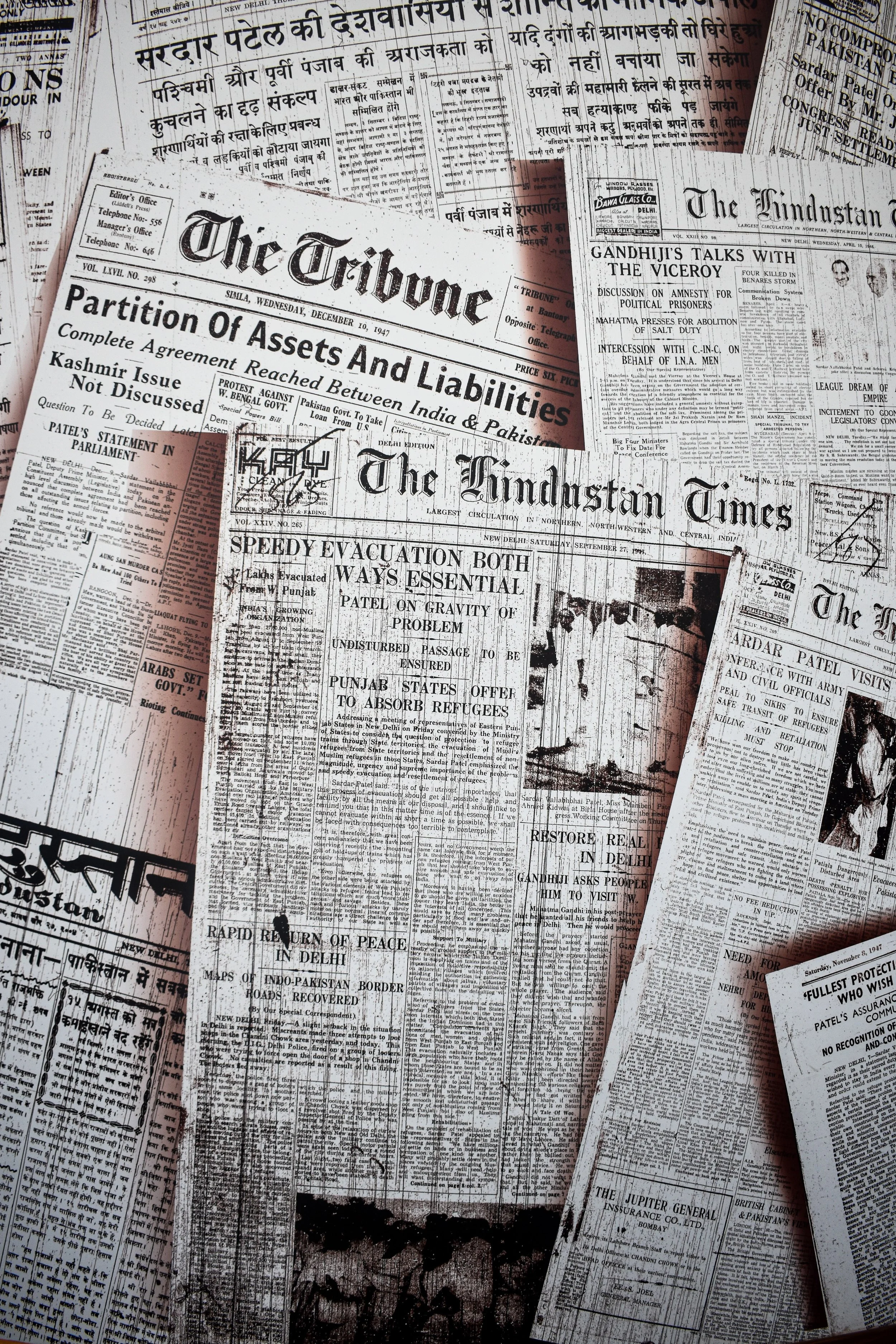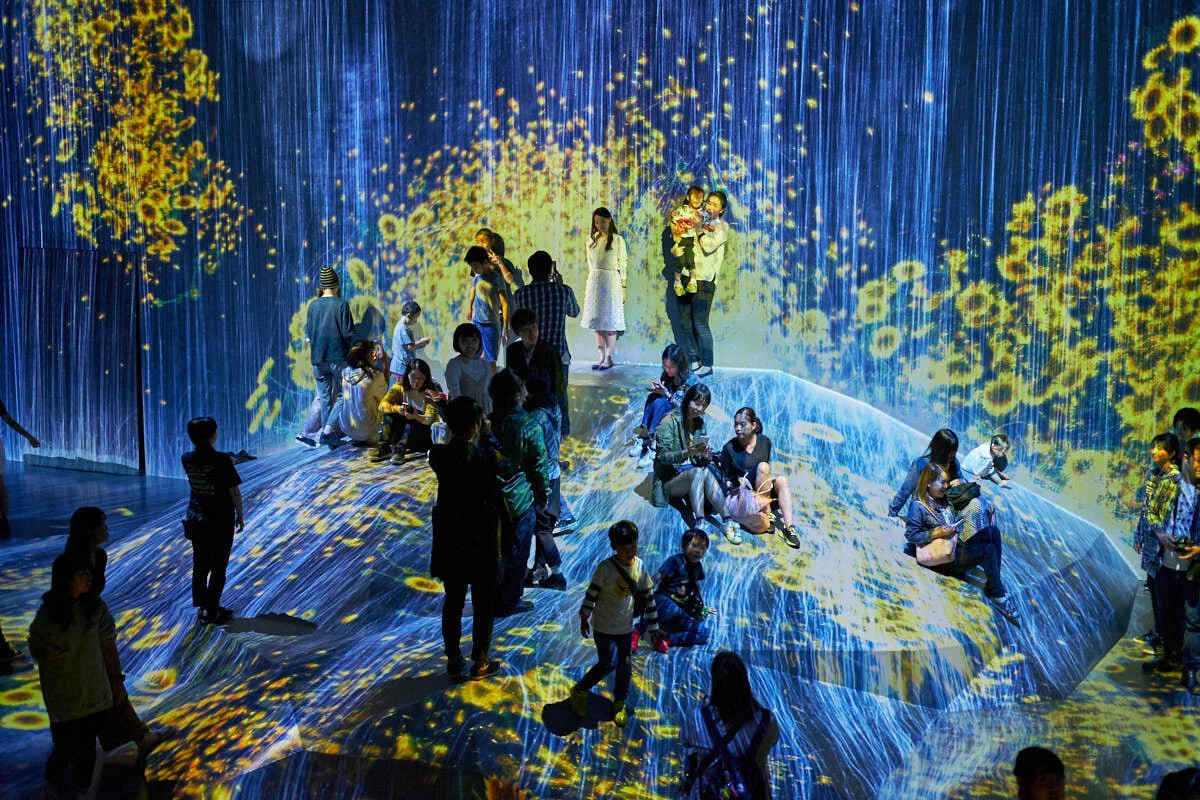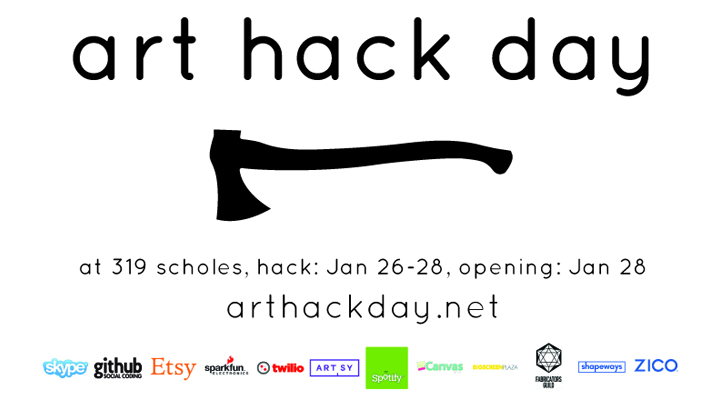The digital art world is long past being just a new creative medium; it has evolved into a complex economic arena. What was once a niche field is now a battleground for artists, developers, and institutions grappling with new questions of ownership, value, and creative rights. This evolving landscape is driven by emerging technologies, including AI and blockchain, which are not only reshaping how art is made but also challenging the very foundations of traditional art markets and the way artists earn a living.
Art Restoration Technologies: Renewing Artwork in the 21st Century
In the visual arts, there is no guarantee that work will be preserved for any time after it has been created. While physical pieces are certainly more permanent that performances, all works are subject to deterioration and destruction. Some pieces are more susceptible, such as work made of fragile material or located in an unstable environment, but all pieces will eventually face wear and damage. Restoration is thus required in order to renew pieces to their original and/or best form. Ultimately, the goal of restoration is to safely and accurately bring pieces to their best form for study and public enjoyment. Through technology, this goal can be accomplished.
In the News: July 2022
July has been a whirlwind of a month at the intersection of art and technology. From possible successful legislation on data privacy in the US, to the Italian government putting its foot down on NFT sales, or just an AI making uncanny valley art that is starting to get a little too real, a lot has happened in the world. The spread of articles below give a glimpse into a small portion of the interesting events that have occurred this month!
Artistic Futures: Digital Interactive Installations
The concept of interactivity in the artistic field became popular in the 1950s due to the realization that interactive art could serve as a bridge between connecting artists and audiences in new ways. More importantly, audiences were able to become part of the artwork through their expression in experiencing the artistic process. These advances have led to greater accessibility in individuals’ artistic experiences. Moreover, the physical return to museums and galleries post-covid enhances digital interactive installations since audiences can experience this art live in a physical space, fostering a new sense of curiosity and community. The more frequent implementation of digital interactive installations in the technological age is just the beginning of its artistic evolution. The digital world of art is a hub of creativity and eager exploration, paving the way for a bright and innovative future for a fairly new form of art.
Crypto Art's Origins and Future
Our recent articles have examined NFTs’ recent rise and issues surrounding their environmental impact. This article looks more in depth at crypto art’s origins and the place it will hold in the future. Crypto art will continue to advance and evolve, so understanding its current impact will help those in the art world maximize its potential.
NFTs: A New Age of Digital Art
In recent months, NFTs have had a large presence on news feeds, especially in artists’ circles. NFTs, or non-fungible tokens, are “digital assets that [represent] real-world objects like art, music, in-game items and videos.” Because of this, they are challenging the traditional ways that people view, buy, and sell artwork. This research will look at how NFTs came to be and what artists and arts administrators should consider when utilizing this technology.
AI-assisted and AI-powered Art: Different Challenges for Digital Preservation
Artists are among the many professions that are embracing artificial intelligence. AI is beginning to undertake tedious repetitive work, without replacing human’s creativity. Recently, the art market has displayed an interest in purchasing AI art. Christies sold Edmond de Belamy, an algorithm-generated painting, and Sotheby’s sold Memories of Passersby I, an AI video installation, at $432,500 and $51,012, respectively. With a rapidly increasing variety of AI art being created and transacted, the need to preserve such art in differentiated ways is emerging.
Livestreaming for Regional Theatre: History and Perspectives: Part 1
This is a two-part series exploring how the benefits of incorporating livestreaming technology into theatres. Part 1 of the report documents a history of livestreaming theatre (involving a timeline and the lifespan of the industry’s biggest players) and a brief analysis of what it means to perform “Live!” and its programming potential.
AI as a Tool in the Arts
Artists are taking advantage of new technologies to enhance their artmaking. They are using AI as a tool in the same way that artists of yesteryear used pen and ink and paintbrushes. This opens a whole new realm of possibilities for arts managers in terms of the scope of multimedia exhibitions and performances. Artists who are using AI as a tool include visual artists, performers, and creators of popular media.
Crowdsourced Digital Art Projects: Centralization and Agency
As digital crowdsourced art continues as a mode of art making, it is necessary to developed an understanding of which features of digital arts programming are crucial in the engagement of digital audiences. The following analysis of four digital art projects focuses on the participatory, rather than the interactive, specifically projects wherein audiences become artists by participating in the creation of a piece of art by making one or more creative contributions. Perhaps not surprising, agency and control were identified as significant to participation.
News Roundup: New Possibilities In 3D
AMT-Lab contributors are always looking at all sorts of new technologies in the world of 3D. With the increasing popularity of technologies such as 3D printing, the possibilities continue to emerge. These new technologies and their uses in the art world keep us interested in how the intersection of art and technology impact our world.
News Roundup: How Digital Distribution is Changing Forms
Every week, AMT-Lab contributors share articles on interesting news at the intersection of technology and arts management. Recently, this practice has generated lots of articles dealing with the distribution of art online. Using the Internet as the platform, museums and artists are spreading their work worldwide.
Free Open Access Database On Rhizome To Preserve Digital Art
Art Hack Day: A Codification of Coolness!
This past weekend, a warehouse in Brooklyn was home to a 48 hour marathon of technologically derived artistic activity. The two day-long event, titled Art Hack Day, was organized by 319 Scholes, an organization that “supports digital arts and experimentation through exhibitions, lectures, panels, participatory workshops, and live performances.” Art Hack Day’s participants were a contrasting group of “hackers whose medium is art and artists whose medium is technology.”
Notwithstanding the title and the foreboding logo of an animated axe, the event was in fact “dedicated to cracking open the process of art-making, with special reverence toward open-source technologies.” And reverential is all that we can remain, because whether we know it or not, we use open-source technologies such as Mozilla Firefox or the Android operating software on a daily basis. Under the grim and inclement climate of SOPA and PIPA, it would be remiss of us to overlook an event that celebrates open-source through digital creativity and art.
Each project undertaken at Art Hack Day was accompanied by a Twitter hashtag, where online viewers could converse with the artists and hackers. Even though the “part-happening, part-hackathon” event is over, the projects can still be viewed online, though the information provided is brief and leaves one wanting to know more. But in all the fairness of open-source, they did provide a live streaming tour of the event last Saturday.
Anyhow, the results of Art Hack Day range from the quirky to the technologically cool! For instance, there is a project titled Bot Zoo, which is essentially a humorous and sarcastic portrayal of spam bots. While malicious bots are those ridiculous advertisements on the web that entice you with equally ridiculous offers (free iPads), the project portrays them as “‘rare, gentle creatures” that “don’t want to hurt us.” Harmless bots aside, if you were tired of surfing the net, why not dive in and start swimming?
Titled SwimBrowser, the project applies Kinect’s ability to recognize body movements, specifically arm motion, in the navigation of the web. In this aquatic browser, you zoom in by swimming forwards, zoom out by reversing the motion of your arms. Moreover, you can also scroll, click, and open up new tabs through a host of intuitive arm movements. Flailing your arms around has never been more fun! But be sure to build up stamina because with SwimBrowser, getting tired of browsing the Internet is no longer in the sea of figurative language.
http://vimeo.com/20255369
The project won the 2011 OpenNI Developer Challenge and its developer, David Solarsky even gave a talk about SwimBrowser at CMU last October for Art+Code 3D.
For those who would like a hand at storytelling, there is Story Wheel, a site where you can narrate stories using Instagram pictures and SoundCloud recordings. Another captivating project is OneHolePunch, "an iphone app that collects circles from your environment and keeps them in your pocket." And the codification of coolness doesn’t stop here.
Take, for instance, Skippable Rope, a virtual skipping rope created out of a pair iPhones that will have you jumping for joy, at least until you get tired or fall out of sync. Or Bike-in Movie, where the movie speeds up as you speed up on your stationery bike! Star Wars fans might want to take a look at Star Wars Uncut GIFs, which is a collection GIFs made from crowdsourced 15 second reproductions of the Star Wars movie, and finally, a project named Aliens That Look Like Skrillex. Yes, Aliens That Look Like Skrillex. In all, there were 35 projects, all of which are worth exploring, because they will leave you in a state of, to quote Eddie Izzard, "techno-joy!"
So if the world of hacking is as alien to you as aliens that look like skrillex, the projects showcased on Art Hack Day are a neat way to begin familiarizing yourself with what open source technologies can achieve in the field of digital and experimental art.
Deconstructing, Reconstructing and Tidying Up Art
In this Wednesday's post, exhibit viewers re-choreograph Henri Matisse’s Dance II and a Swiss comedian cleans the floor of Vincent van Goh’s 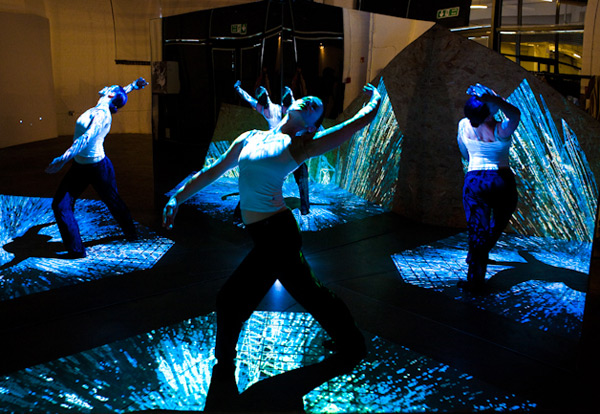 Vincent’s Room, Arles. Yes, you read that correctly, what I have to share today is as glorious and odd as it sounds. It has taken me quite some time to settle down long enough to write this post- I have been rather distracted by these projects and videos. I know you will be too…sorry in advance…
Let’s first take a look at Intel’s newest project in its Visual Life campaign- “Remastered: A Visually Smart Production from Intel.” Showcasing the work of leading curators and innovative designers, the exhibit on display at London’s One Marylebone explores and pushes the boundaries between art and technology; more specifically, between “old art” and Intel’s newest processing technology. The result, you ask? A sound installation remake of Wassily Kandinsky’s On White II, an online application of Pablo Picasso’s Guernica, a moving image rendering of Salvador Dali’s The Persistence of Memory, a food design and photography adaptation of Leonardo Da Vinci’s The Last Supper, a visual animation of J.M.W. Turner’s Rain, Steam and Speed-The Great Northern Railway, and a stereoscopic, and 3D animation of Casper David Friedrich’s Wanderer Above the Sea of Fog (a special favorite of mine), just to name a few. Collaborating with jotta, Intel’s curatorial and creative partner, the artists “remastered” select classic works of the world’s greatest masters using digital processes to give new meaning to “old art” for a modern audience.
Vincent’s Room, Arles. Yes, you read that correctly, what I have to share today is as glorious and odd as it sounds. It has taken me quite some time to settle down long enough to write this post- I have been rather distracted by these projects and videos. I know you will be too…sorry in advance…
Let’s first take a look at Intel’s newest project in its Visual Life campaign- “Remastered: A Visually Smart Production from Intel.” Showcasing the work of leading curators and innovative designers, the exhibit on display at London’s One Marylebone explores and pushes the boundaries between art and technology; more specifically, between “old art” and Intel’s newest processing technology. The result, you ask? A sound installation remake of Wassily Kandinsky’s On White II, an online application of Pablo Picasso’s Guernica, a moving image rendering of Salvador Dali’s The Persistence of Memory, a food design and photography adaptation of Leonardo Da Vinci’s The Last Supper, a visual animation of J.M.W. Turner’s Rain, Steam and Speed-The Great Northern Railway, and a stereoscopic, and 3D animation of Casper David Friedrich’s Wanderer Above the Sea of Fog (a special favorite of mine), just to name a few. Collaborating with jotta, Intel’s curatorial and creative partner, the artists “remastered” select classic works of the world’s greatest masters using digital processes to give new meaning to “old art” for a modern audience.
…The exhibition unlocks the creative potential of technology and underlines how visual masterpieces can be created with simply a mouse as a brushstroke or a screen as a canvas.
Exhibitions like these generate much discussion in both the academic and professional art world, as the issue of the digitization of art remains a hot topic of debate. What is most inspiring about these remastered pieces is the beauty in the medium. As an art history student and Italian Renaissance aficionado, I am neither offended nor resistant to the digital world’s claim it can reproduce or master painterly qualities and techniques in its own medium. It is important to view these “remastered” pieces not as competitors of the original work, but as showcases of the power, potential and influence technology has in the modern artistic process.
If you are familiar with Turner’s oeuvre, be sure to view Eric Schockmel’s 3D animation of the painting, Rain, Stream and Speed- The Great Northern Railway. Known for his unsurpassed ability to render light, Turner’s work is an experience of the Sublime, an aesthetic theory originating in the 18th-century. Schockmel’s stunning remastering addresses themes consistent in Turner’s work. But can the advanced technology of 3D modeling, animation software, Adobe After Effects and sound design create an experience of the Sublime, a theory developed in response to a level of advanced and dramatic painterly techniques? Or is it unfair to project such standards and theories on the entirely unique and individual medium of digital art? Do we need to develop a new vocabulary with which to discuss it? The artists featured have contextualized the meanings of the “old art” in today’s modern and digital age. As jotta's head of creative, Ben James stated
The broad range of work and outcomes exhibited within Remastered help demonstrate how technology is being adopted practically and conceptually by artists and designers across all disciplines. The intersection of technology and art has gone far beyond its creation on a computer to a symbiotic relationship -- one where new technology offers new opportunities to the artist or designer who, in return, provides ever-evolving experiences and contexts to our relationship with technology.
If nothing else, each artist’s unique interpretation of the work makes viewing the remastered piece and accompanying videos a worthwhile activity on this midweek, midday Wednesday (Bompas & Parr’s redesign of Da Vinci’s The Last Supper is a good place to begin, it will surely amaze you).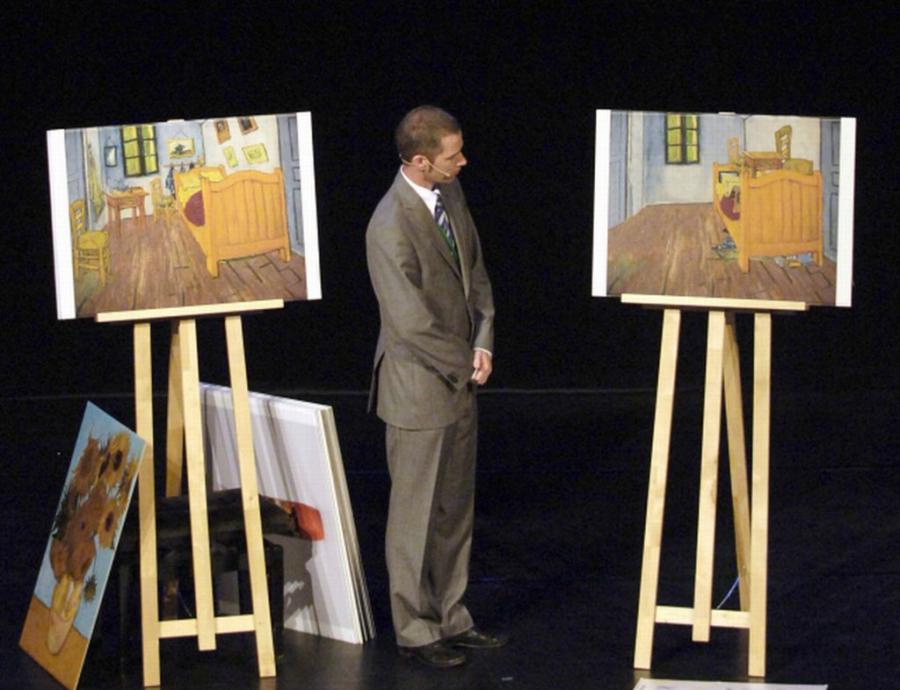
Ok, on to my next obsession. Have you heard of Ursus Wehrli? No? It’s okay. I had not either before viewing his TED Talk. Since then, however, I am either always a) re-watching his talk or b) mentally rearranging and reorganizing the components and forms of any given painting into tidy stacks. My new guilty pleasure is the TED Talk “Ursus Wehrli tidies up art” given by Wehrli, a Swiss comedian, cabaret artist and
…the author of Tidying Up Art, a visionary manifesto that yearns toward a more rational, more organized and cleaner form of modern art. In deconstructing the work of Paul Klee, Jasper Johns and other masters into its component parts, organized by color and size, Wehrli posits a more perfect art world
Take your Wednesday lunch break with Wehrli as he taps into your confusions and Type A tendencies when it comes to viewing and understanding contemporary art. The talk will surely elicit laughter; proceed with caution when at work.
And again, my apologies for any drastic drop in productivity at work or school as a result of time spent transfixed by the digitally remastered masterpieces or watching, and re-watching, Wehrli’s convincing contemporary art cleaning spree.
Do You Know the Way to San Jose?
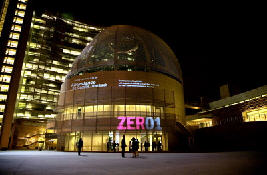 This week saw the arrival of the second biennial 01SJ - North America’s newest and largest festival of digital arts, and a great deal more. From a hip hop, multi-media meditation on Antarctica to robot art, from conversations with artificial intelligence to operatic performances of Google headlines about the environment, from avant-garde cinema to new musical forms - well over 100 artworks, performances, screenings, talks, and workshops will be featured at 01SJ. Festival organizers expect it to be a perspective-altering experience that entertains, enlightens, educates and involves attendees in a new understanding of our changing world.
This week saw the arrival of the second biennial 01SJ - North America’s newest and largest festival of digital arts, and a great deal more. From a hip hop, multi-media meditation on Antarctica to robot art, from conversations with artificial intelligence to operatic performances of Google headlines about the environment, from avant-garde cinema to new musical forms - well over 100 artworks, performances, screenings, talks, and workshops will be featured at 01SJ. Festival organizers expect it to be a perspective-altering experience that entertains, enlightens, educates and involves attendees in a new understanding of our changing world.
The 2nd Biennial 01SJ Global Festival of Art on the Edge consists of over 100 events, exhibitions, concerts, performances, lectures and workshops at many venues across the urban landscape of downtown San Jose.
According to Artistic Director Steven Dietz, “This has the potential to be the South by Southwest of digital media in the United States.”
01SJ aspires to become the North American answer to the Ars Electronica Festival – the annual celebration of digital art in Linz, Austria first staged in 1979. “Linz is now a cultural center for the country,” said 01SJ founder and board chairwoman Andy Cunningham, “We hope to do that with San Jose.








